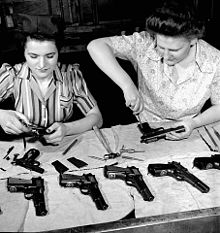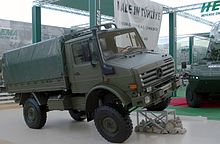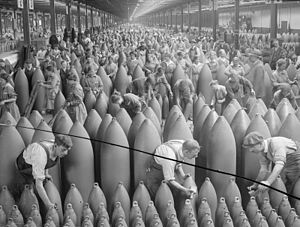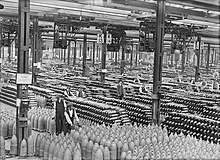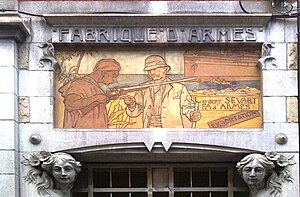-
(인문학) Arms industry 군수(무기)산업사람되기/인문학 2017. 4. 8. 05:36
출처: https://en.wikipedia.org/wiki/Arms_industry
Arms industry 군수(무기)산업
From Wikipedia, the free encyclopediaPart of a series about War The arms industry, also known as the defense industry or the arms trade, is a global industry responsible for the manufacturing and sales of weapons and military technology. It consists of a commercial industry involved in the research and development, engineering, production, and servicing of military material, equipment, and facilities. Arms-producing companies, also referred to as arms dealers, defense contractors, or as the military industry, produce arms for the armed forces of states and civilians. Departments of government also operate in the arms industry, buying and selling weapons, munitions and other military items. An arsenal is a place where arms and ammunition are made, maintained and repaired, stored, or issued, in any combination, whether privately or publicly owned. Products include guns, artillery, ammunition, missiles, military aircraft, military vehicles, ships, electronic systems, night vision devices, holographic weapon sights, laser rangefinders, laser sights, hand grenades, landmines and more. The arms industry also provides other logistical and operational support.
Stockholm International Peace Research Institute (SIPRI) estimated in 2012 that 2012 military expenditures were roughly 1.8 trillion United States dollars.[1] This represents a relative decline from 1990 when military expenditures made up 4% of world GDP. Part of the money goes to the procurement of military hardware and services from the military industry. The combined arms sales of the top 100 largest arms-producing companies amounted to an estimated $395 billion in 2012 according to SIPRI.[2] In 2004 over $30 billion were spent in the international arms trade (a figure that excludes domestic sales of arms).[3] According to SIPRI, the volume of international transfers of major weapons in 2010–14 was 16 per cent higher than in 2005–2009. The five biggest exporters in 2010–2014 were the United States, Russia, China, Germany and France, and the five biggest importers were India, Saudi Arabia, China, the United Arab Emirates and Pakistan.[4]
Many industrialized countries have a domestic arms-industry to supply their own military forces. Some countries also have a substantial legal or illegal domestic trade in weapons for use by its citizens, primarily for self-defense, hunting or sporting purposes. Illegal trade in small arms occurs in many countries and regions affected by political instability. The Small Arms Survey estimates that 875 million small arms circulate worldwide, produced by more than 1,000 companies from nearly 100 countries.[5]
Contracts to supply a given country's military are awarded by governments, making arms contracts of substantial political importance. The link between politics and the arms trade can result in the development of what U.S. President Dwight D. Eisenhower described as a military-industrial complex, where the armed forces, commerce, and politics become closely linked, similarly to the European multilateral defence procurement. Various corporations, some publicly held, others private, bid for these contracts, which are often worth many billions of dollars. Sometimes, as with the contract for the international Joint Strike Fighter, a competitive tendering process takes place, with the decision made on the merits of the designs submitted by the companies involved. Other times, no bidding or competition takes place.
Contents
[hide]History[edit]
Further information: Military production during World War IIDuring the early modern period, France, United Kingdom, Netherlands and some states in Germany became self-sufficient in arms production, with diffusion and migration of skilled workers to more peripheral countries such as Portugal and Russia.
The modern arms industry emerged in the second half of the nineteenth century as a product of the creation and expansion of the first large military-industrial companies. As smaller countries (and even newly industrializing countries like Russia and Japan) could no longer produce cutting-edge military equipment with their indigenous resources and capacity, they increasingly began to contract the manufacture of military equipment, such as battleships, artillery pieces and rifles to foreign firms.
In 1854, the British government awarded a contract to the Elswick Ordnance Company of industrialist William Armstrong for the supply of his latest breech loading rifled artillery pieces. This galvanised the private sector into weapons production, with the surplus being increasingly exported to foreign countries. Armstrong became one of the first international arms dealers, selling his weapon systems to governments across the world from Brazil to Japan.[6] In 1884, he opened a shipyard at Elswick to specialise in warship production—at the time, it was the only factory in the world that could build a battleship and arm it completely.[7] The factory produced warships for many navies, including the Imperial Japanese Navy. Several Armstrong cruisers played an important role in defeating the Russian fleet at the Battle of Tsushima in 1905.
In the American Civil War in 1861 the north had a distinct advantage over the south as it relied on using the breech-loading rifle against the muskets of the south. This began the transition to industrially produced mechanised weapons such as the Gatling gun.[8]
This industrial innovation in the defence industry was adopted by Prussia in 1866 & 1870-71 in its defeat of Austria and France respectively. By this time the machine gun had begun entering into the militaries. The first example of its effectiveness was in 1899 during the Boer War and in 1905 during the Russo-Japanese War. However, Germany were leaders in innovation of weapons and used this innovation nearly defeating the allies in World War I.
In 1885, France decided to capitalize on this increasingly lucrative form of trade and repealed its ban on weapon exports. The regulatory framework for the period up to the First World War was characterized by a laissez-faire policy that placed little obstruction in the way of weapons exports. Due to the carnage of World War I, arms traders began to be regarded with odium as "merchants of death" and were accused of having instigated and perpetuated the war in order to maximise their profits from arms sales. An inquiry into these allegations in Britain failed to find evidence to support them. However, the sea change in attitude about war more generally meant that governments began to control and regulate the trade themselves.
The volume of the arms trade greatly increased during the 20th century, and it began to be used as a political tool, especially during the Cold War where the United States and the USSR supplied weapons to their proxies across the world, particularly third world countries (see Nixon Doctrine).[9]
Sectors[edit]
Land-based weapons[edit]
This category includes everything from light arms to heavy artillery, and the majority of producers are small. Many are located in third world countries. International trade in handguns, machine guns, tanks, armored personnel carriers, and other relatively inexpensive weapons is substantial. There is relatively little regulation at the international level, and as a result, many weapons fall into the hands of organized crime, rebel forces, terrorists, or regimes under sanctions.[10]
Small arms[edit]
Main article: Small arms tradeThe Control Arms Campaign, founded by Amnesty International, Oxfam, and the International Action Network on Small Arms, estimated in 2003 that there are over 639 million small arms in circulation, and that over 1,135 companies based in more than 98 different countries manufacture small arms as well as their various components and ammunition.[11]
Aerospace systems[edit]
Main article: Aerospace manufacturerEncompassing military aircraft (both land-based and naval aviation), conventional missiles, and military satellites, this is the most technologically advanced sector of the market. It is also the least competitive from an economic standpoint, with a handful of companies dominating the entire market. The top clients and major producers are virtually all located in the western world and Russia, with the United States easily in first place. Prominent aerospace firms include Rolls Royce, BAE, Dassault Aviation, Sukhoi, Mikoyan, EADS, Leonardo-Finmeccanica, Thales Group, Lockheed Martin, Northrop Grumman and Boeing. There are also several multinational consortia mostly involved in the manufacturing of fighter jets, such as the Eurofighter. The largest military contract in history, signed in October 2001, involved the development of the Joint Strike Fighter.[10]
[edit]
Some of the world's great powers maintain substantial naval forces to provide a global presence, with the largest nations possessing aircraft carriers, nuclear submarines and advanced anti-air defense systems. The vast majority of military ships are conventionally powered, but some are nuclear-powered. There is also a large global market in second-hand naval vessels, generally purchased by developing countries from Western governments.[10]
Cybersecurity industry[edit]
Main article: Computer securityThe cybersecurity industry is becoming the most important defence industry as cyber attacks are being deemed as one of the greatest risk to defence in the next ten years as cited by the NATO review in 2013.[12] Therefore, high levels of investment has been placed in the cybersecurity industry to produce new software to protect the ever growing transition to digitally run hardware. For the military industry it is vital that protections are used for systems used for reconnaissance, surveillance and intelligence gathering. However, to protect the cyber world from attacks there are advanced cyber protection strategies used such as content, cloud and wireless security. These can be intertwined to form several secure layers.
Nevertheless, cyber attacks and cyber attackers have become more advanced in their field using techniques such as Dynamic Trojan Horse Network (DTHN) Internet Worm, Zero-Day Attack, and Stealth Bot. As a result, the cybersecurity industry has had to improved the defence technologies to remove any vulnerability to cyber attacks using systems such as the Security of Information (SIM), Next-Generation Firewalls (NGFWs) and DDoS techniques.
As the threat to computers grows, the demand for cyber protection will rise, resulting in the growth of the cybersecurity industry. It is expected that the industry will be dominated by the defence and homeland security agencies that will make up 40% of the industry.[13]
International arms transfers[edit]
According to research institute, SIPRI, the volume of international transfers of major weapons in 2010–14 was 16 per cent higher than in 2005–2009. The five biggest exporters in 2010–14 were the United States, the United Kingdom, Russia, China and France, and the five biggest importers were India, Saudi Arabia, China, the United Arab Emirates (UAE) and Pakistan. The flow of arms to Africa, the Americas, Asia and Oceania, and the Middle East increased significantly between 2005–2009 and 2010–14, while there was a notable decrease in the flow to Europe.[4]
SIPRI has identified 60 countries as exporters of major weapons in 2010–14. The top 5 exporters during the period were responsible for almost 74 per cent of all arms exports. The composition of the five largest exporters of arms changed between 2005–2009 and 2010–14: while the USA and Russia remained by far the largest exporters, China narrowly, but notably, replaced Germany as the third largest exporter as Germany slid down to 6th place. The top 5 exported 14 per cent more arms in 2010–14 than the top 5 in 2005–2009.[4]
In 2010–14, 153 countries (about three-quarters of all countries) imported major weapons. The top 5 recipients accounted for 33 per cent of the total arms imports during the period (see table 2). India, China and the UAE were among the top 5 importers in both 2005–2009 and 2010–14. Asia and Oceania accounted for nearly half of imports in 2010–14, followed by the Middle East, Europe, the Americas and Africa (see figure 3). SIPRI also identified seven groups of rebel forces as importers of major weapons in 2010–14, but none of them accounted for more than 0.02 per cent of total deliveries.[4]
World's largest arms exporters[edit] 세계최대 무기수출국(한국 9위)
Units are in Trend Indicator Values expressed as millions of U.S. dollars at 1990s prices. These numbers may not represent real financial flows as prices for the underlying arms can be as low as zero in the case of military aid. The following are estimates from Stockholm International Peace Research Institute.[14]
2016
RankSupplier 2006 2007 2008 2009 2010 2011 2012 2013 2014 2015 2016 1  United States
United States7481 7800 
6799 
6806 
8098 
9104 
9163 
7687 
10470 
10484 
9894 
2  Russia
Russia5154 5568 
6265 
5070 
6172 
8695 
8480 
8107 
5468 
5483 
6432 
3  Germany
Germany2696 3244 
2378 
2539 
2745 
1349 
816 
722 
1785 
2049 
2813 
4  France
France1702 2402 
1991 
1918 
898 
1752 
1025 
1511 
1734 
2013 
2226 
5  China
China670 505 
636 
1178 
1496 
1338 
1728 
2055 
1360 
1966 
2123 
6  United Kingdom
United Kingdom987 974 
967 
1050 
1151 
1040 
934 
1645 
1644 
1214 
1393 
7  Israel
Israel406 539 
379 
753 
686 
588 
481 
414 
400 
710 
1260 
8  Italy
Italy514 688 
391 
493 
516 
918 
746 
867 
743 
570 
802 
9  South Korea
South Korea158 279 
178 
267 
197 
331 
218 
235 
163 
105 
534 
10  Ukraine
Ukraine543 624 
378 
377 
470 
553 
1464 
689 
657 
323 
528 
Please note that rankings for exporters below a billion dollars are less meaningful, as they can be swayed by single contracts.
Next to SIPRI there are several other sources that provide data on international transfers of arms. These include national reports by national governments about arms exports, the UN register on conventional arms and an annual publication by the U.S. Congressional Research Service that includes data on arms exports to developing countries as compiled by U.S. intelligence agencies. A list of such sources can be found at the SIPRI website.[15] Due to the different methodologies and definitions used different sources often provide significantly different data. For example, according to Statistisk sentralbyrå (Norway state statistics), Norway exports a greater value (in USD) of arms than many of the nations listed above.
World's largest arms importers[edit] 세계최대 무기수입국(한국 6위)
Units are in Trend Indicator Values expressed as millions of U.S. dollars at 1990s prices. These numbers may not represent real financial flows as prices for the underlying arms can be as low as zero in the case of military aid.[14]
2016 rank Recipient Arms imp 1  Saudi Arabia
Saudi Arabia2979 2  Algeria
Algeria2882 3  India
India2547 4  Iraq
Iraq1734 5  Egypt
Egypt1483 6  South Korea
South Korea1333 7  United Arab Emirates
United Arab Emirates1278 8  Vietnam
Vietnam1196 9  Australia
Australia1060 10  China
China993 Please note that arms import rankings fluctuate heavily as countries enter and exit wars. Export data tend to be less volatile as exporters tend to be more technologically advanced and have stable production flows.
List of major weapon manufacturers[edit]
세계최대 무기제조사(10위중 미국 6개사 보유)
Main articles: List of modern armament manufacturers and List of defense contractorsPrivate military contractors are private companies that provide logistics, manpower, and other expenditures for a military force.
Further information: Companies by arms salesThis is a list of the world's largest arms manufacturers and other military service companies who profit the most from the War economy, their origin is shown as well. The information is based on a list published by the Stockholm International Peace Research Institute for 2013.[16][17][18][19] The list provided by the SIPRI excludes companies based in China.
Rank Company Country Arms sales (US$ m.) Total sales (US$ m.) Arms sales as a % of total sales Total profit Total employment 1 Lockheed Martin  United States
United States35 490 45 500 78 2 981 115000 2 Boeing  United States
United States30 700 86 623 35 4 585 168400 3 BAE Systems  United Kingdom
United Kingdom26 820 28 406 94 275 84600 4 Raytheon  United States
United States21 950 23 706 93 2 013 63000 5 Northrop Grumman  United States
United States20 200 24 661 82 1 952 65300 6 General Dynamics  United States
United States18 660 31 218 60 2 357 96000 7 Airbus Group  European Union
European Union15 740 78 693 20 1 959 144060 8 United Technologies Corporation  United States
United States11 900 62 626 19 5 721 212000 9 Leonardo S.p.A.  Italy
Italy10 560 21 292 50 98 63840 10 Thales Group  France
France10 370 18 850 55 761 65190 Arms control[edit]
Main article: Arms controlArms control refers to international restrictions upon the development, production, stockpiling, proliferation and usage of small arms, conventional weapons, and weapons of mass destruction.[20] It is typically exercised through the use of diplomacy, which seeks to persuade governments to accept such limitations through agreements and treaties, although it may also be forced upon non-consenting governments.
Oscar Arias Sanchez President of Costa Rica (awarded the Nobel Peace Prize in 1987 for his efforts to end civil wars across Central America through the Esquipulas II Accord) has stated:
“ When a country decides to invest in arms, rather than in education, housing, the environment, and health services for its people, it is depriving a whole generation of its right to prosperity and happiness. We have produced one firearm for every ten inhabitants of this planet, and yet we have not bothered to end hunger when such a feat is well within our reach. Our international regulations allow almost three-quarters of all global arms sales to pour into the developing world with no binding international guidelines whatsoever. Our regulations do not hold countries accountable for what is done with the weapons they sell, even when the probable use of such weapons is obvious.[21] ” Notable international arms control treaties[edit]
- Geneva Protocol on chemical and biological weapons, 1925
- Outer Space Treaty, signed and entered into force 1967
- Biological Weapons Convention, signed 1972, entered into force 1975
- Missile Technology Control Regime (MTCR), 1987
- Chemical Weapons Convention, signed 1993, entered into force 1997
- Ottawa Treaty on anti-personnel land mines, signed 1997, entered into force 1999
- New START Treaty, signed by Russia and the United States in April 2010, entered into force in February 2011
- Arms Trade Treaty, concluded in 2013, entered into force on 24 December 2014.[22]
The European Council stated to the United Nations General Assembly:
“ We are committed to upholding, implementing and further strengthening the multilateral disarmament and non-proliferation framework in the fight against threats which are tending to escape the control of national sovereignty, the challenges deriving from destabilising accumulation and spread of small arms and light weapons, from illicit or irresponsible arms trade, and from the proliferation of weapons of mass destruction, which are creating new and growing hot-spots of international tension. In this regard, the EU welcomes the growing support in all parts of the world for an International Arms Trade Treaty and is firmly committed to this process.[23] ” See also[edit]
- Arms race
- Arms control
- Arms deal (disambiguation)
- Arms embargo
- Arms trafficking
- Cyber-arms industry
- Disarmament
- Guns versus butter model
- History of military technology
- List of chemical arms control agreements
- List of United States defense contractors
- List of most-produced firearms
- Military Keynesianism
- Naval conference (disambiguation)
- Nuclear disarmament
- Offset agreement
- Peace and conflict studies
- Peace dividend
- Permanent war economy
- Private military company
- Small Arms and Light Weapons (SALW)
- Small arms trade
- Torture trade
- United Nations Office for Disarmament Affairs
References[edit]
- ^ SIPRI Yearbook 2013. www.sipri.org. Retrieved on 2016-04-29.
- ^ Stockholm International Peace Research Institute. Sipri.org. Retrieved on 2012-05-09.
- ^ Arms trade key statistics. BBC News (2005-09-15). Retrieved on 2012-05-09.
- ^ a b c d "Trends in International Arms Transfer, 2014". www.sipri.org. Stockholm International Peace Research Institute. Retrieved 18 March 2015.
- ^ "Small Arms Survey — Weapons and Markets- 875m small arms worldwide, value of authorized trade is more than $8.5b". 8 December 2014. Retrieved 26 March 2015.
- ^ "William George Armstrong (1810–1900)".
- ^ Dougan, David (1970). The Great Gun-Maker: The Story of Lord Armstrong. Sandhill Press Ltd. ISBN 0-946098-23-9.
- ^ "Defense Industries - Military History - Oxford Bibliographies - obo". www.oxfordbibliographies.com. Retrieved 2015-11-03.
- ^ Stohl, Rachel; Grillot, Suzette (2013). The International Arms Trade. Wiley Press. Retrieved 2013-02-07.
- ^ a b c "International Defense Industry". Archived from the original on 2011-07-26. Retrieved 2007-05-20.. www.fpa.org
- ^ Debbie Hillier; Brian Wood (2003). "Shattered Lives – the case for tough international arms control" (PDF). Control Arms Campaign. p. 19. Retrieved 2009-03-28.
- ^ "NATO review".
- ^ "Cyber security for the defence industry | Cyber Security Review". www.cybersecurity-review.com. Retrieved 2015-11-02.
- ^ a b Top List TIV Tables-SIPRI. Armstrade.sipri.org. Retrieved on 2012-05-09.
- ^ armstrad — www.sipri.org Archived May 20, 2005, at the Wayback Machine.. Sipri.org. Retrieved on 2012-05-09.
- ^ a b http://www.sipri.org/research/armaments/production/recent-trends-in-arms-industry
- ^ "Archived copy" (PDF). Archived from the original (PDF) on 2014-12-26. Retrieved 2014-12-16.
- ^ "EUROPE onLINE". europeonline-magazine.eu. Retrieved 30 November 2015.
- ^ "SIPRI Releases Top 100 Defense Company Data". Defense News. Retrieved 26 March 2015.
- ^ Barry Kolodkin. "What Is Arms Control?" (Article). About.com, US Foreign Policy. The New York Times Company. Retrieved 13 May 2012.
- ^ Anonymous. The Global Arms Trade: Strengthening International Regulations. Interview with Oscar Arias Sanchez. Harvard International Review Date: Tuesday, July 1, 2008 http://www.allbusiness.com/government/government-bodies-offices/11664335-1.htmlaccessed 10 Feb 2010
- ^ Delgado,Andrea. Explainer: What is the Arms Trade Treaty, 23, Feb, 2015, https://theconversation.com/explainer-what-is-the-arms-trade-treaty-37673
- ^ EU@UN – EU Presidency Statement – United Nations 62nd General Assembly: General Debate Archived October 18, 2007, at the Wayback Machine.. Europa-eu-un.org. Retrieved on 2012-05-09.
External links[edit]

Wikimedia Commons has media related to Military industries and wartime industrial production. - Amnesty International: Arms Trade
- The British Library – Defence Industry Guide (sources of information)
- FAS's Arms Sales Monitoring Project
- The Guardian's arms trade report
- List of participators of the Defense System and Equipment international conference in London, 2003
- SIPRI arms industry reports and database
- SIPRI list of Top 100 arms-producing companies
- SPADE Defense Index (NYSE: DXS) Defense sector market index
- The True Cost of Global Arms Trade [infographic included]
- UN Office for Disarmament Affairs
- U.S. Arms Sales to the Third World from the Dean Peter Krogh Foreign Affairs Digital Archives
- World Map and Chart of Arms exports per country by Lebanese-economy-forum, World Bank data
- World Security Institute's Center for Defense Information
- Z. Yihdego, Arms Trade and International Law, Hart: OXford, 2007
'사람되기 > 인문학' 카테고리의 다른 글
(인문학/동영상) 김영수 '완역 사기 본기' 저자와의 대화 (0) 2017.04.12 (인문학/동영상) 탁석산 '한국인은 무엇으로 사는가' 저자와의 대화 (0) 2017.04.12 (인문학/동영상) EBS 다큐프라임 자본주의 제3부 금융지능은 있는가 (0) 2017.03.21 (인문학/동영상) EBS 다큐프라임 자본주의 제2부 소비는 감정이다 (0) 2017.03.20 (인문학/동영상) EBS 다큐프라임 자본주의 제1부 돈은 빚이다 (0) 2017.03.19
